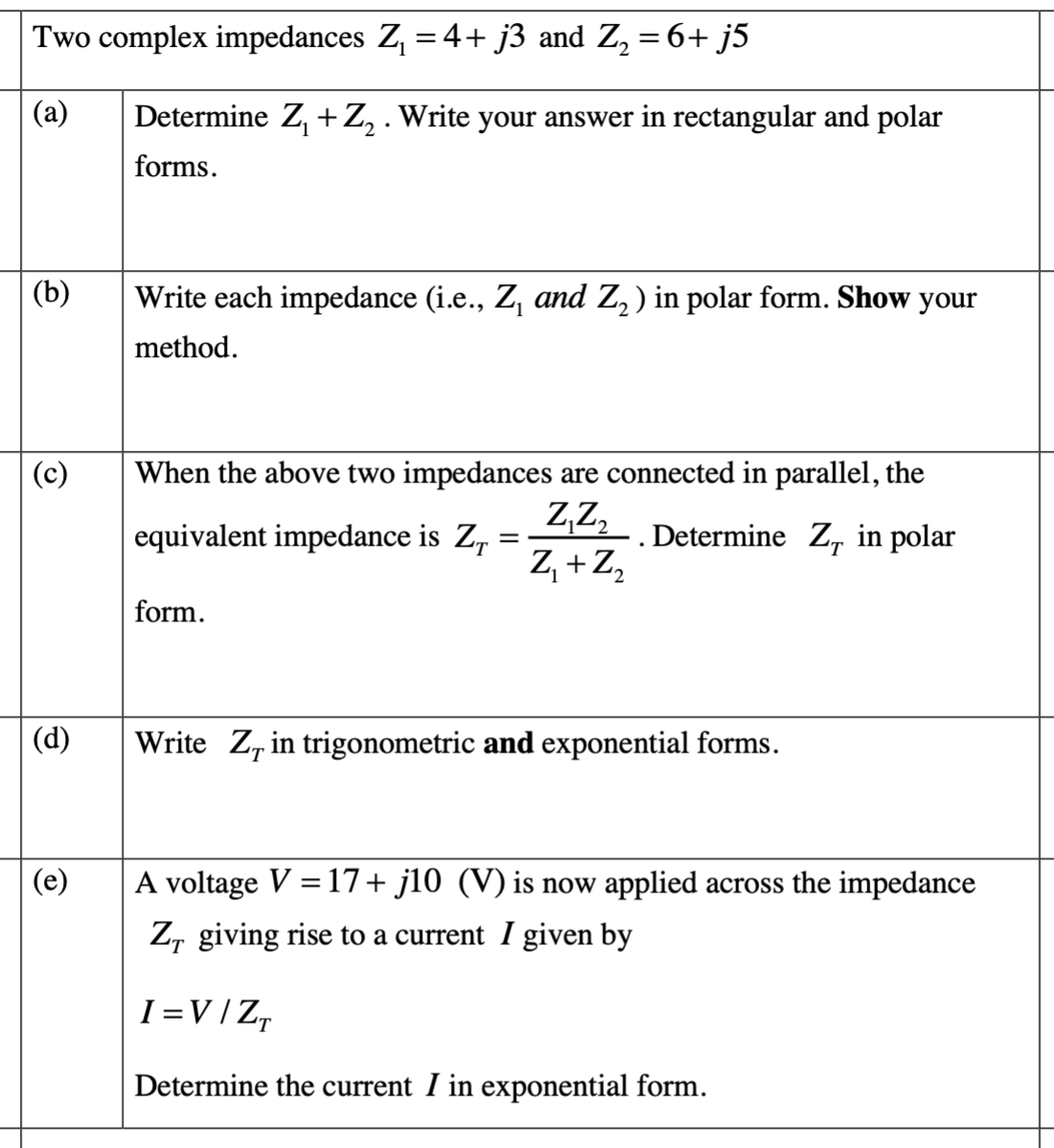Two complex impedances Z, = 4+ j3 and Z, = 6+ j5 (a) Determine Z, +Z, . Write your answer in rectangular and polar forms. (b) Write each impedance (i.e., Z, and Z, ) in polar form. Show your method. When the above two impedances are connected in parallel, the Z,Z2 Z, + Z, (c) equivalent impedance is Z, Determine Z, in polar form.
Two complex impedances Z, = 4+ j3 and Z, = 6+ j5 (a) Determine Z, +Z, . Write your answer in rectangular and polar forms. (b) Write each impedance (i.e., Z, and Z, ) in polar form. Show your method. When the above two impedances are connected in parallel, the Z,Z2 Z, + Z, (c) equivalent impedance is Z, Determine Z, in polar form.
Algebra & Trigonometry with Analytic Geometry
13th Edition
ISBN:9781133382119
Author:Swokowski
Publisher:Swokowski
Chapter11: Topics From Analytic Geometry
Section11.5: Polar Coordinates
Problem 97E
Related questions
Question

Transcribed Image Text:Two complex impedances Z, = 4+ j3 and Z, = 6+ j5
(а)
Determine Z, +Z, . Write your answer in rectangular and polar
forms.
(b)
Write each impedance (i.e., Z, and Z, ) in polar form. Show your
method.
(c)
When the above two impedances are connected in parallel, the
equivalent impedance is Z„
Z,z,
. Determine Z, in polar
Z, + Z,
form.
|(d)
Write Z, in trigonometric and exponential forms.
(e)
A voltage V = 17+ j10 (V) is now applied across the impedance
Z, giving rise to a current I given by
I =V/Z,
'T
Determine the current I in exponential form.
Expert Solution
This question has been solved!
Explore an expertly crafted, step-by-step solution for a thorough understanding of key concepts.
Step by step
Solved in 3 steps

Recommended textbooks for you

Algebra & Trigonometry with Analytic Geometry
Algebra
ISBN:
9781133382119
Author:
Swokowski
Publisher:
Cengage

Algebra & Trigonometry with Analytic Geometry
Algebra
ISBN:
9781133382119
Author:
Swokowski
Publisher:
Cengage